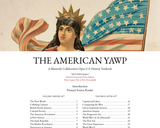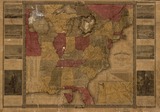This version of The American Yawp, Volume I is a modified version of The American Yawp, Volume I published by Stanford University Press and edited by Joseph Locke and Ben Wright. The original textbook is licensed CC-BY-SA 4.0, and this version is licensed in the same way.
In this CSCC version, the original book was modified by the addition of focus questions and key terms for each chapter. A pop-up glossary was also added. The book format was also adapted using the Kotobee authoring platform to create a web-based eBook. Additional material is adapted from Benjamin Pugno and Dea Boster, History of Western Medicine to 1700, Autumn 2017 ed. (Columbus, OH: Columbus State Community College, 2017).
The American Yawp, Volume 1 serves as the textbook for HIST 1151 American History to 1877. To take this course for credit, register at https://www.cscc.edu/.
The eBook can be viewed directly at:
https://csbooks.org/hist1151
A set of 30 primary source readings is also available to accompany this CSCC version of The American Yawp. The primary sources may be accessed at the following link:
https://ohiolink.oercommons.org/authoring/136-hist-1151-american-history-to-1877-primary-source-
Please attribute this work in the following manner:
"The American Yawp, Vol. 1" by Dea Boster, Christianna Hurford, and Jennifer Nardone, Columbus
State Community College is licensed under CC BY-SA 4.0 / A derivative from the original work found at http://www.americanyawp.com/.



